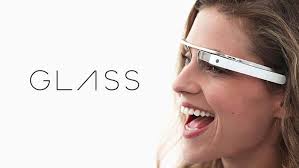In 2013 Google Glass became the tip of the spear in demonstrating that wearable technology is a viable channel to deliver promotional messaging. A survey conducted in the UK by YouGov, the international Internet based market research firm, revealed a few compelling facts. 28% of consumers would welcome, welcome not merely tolerate, promotional messaging with a nearly equal amount saying that they would opt-in to be informed of additional offers from the sponsor. One key to the latter is providing these consumers with some unique ability to receive special offers not available to the general audience.
This is totally consistent with the ability for technology to close the gap between searching for and receiving information. And the link it can provide between digital information and brick and mortar sales is compelling. I want to acknowledge an article by Michael Somerville who in writing for the Retail Gazette interviewed Eric Abensur, Group CEO of a global digital commerce solutions company Venda. Here is what Abensur said about wearable technology : “Wearable technology has the potential to help both consumers and retailers. Consumers will be able to make informed purchase decisions and redeem offers, while Glass will help retailers promote the visibility of products on social networks in a novel and engaging way.”
It is hard to imagine a category that wouldn’t see benefit in shortening the length of time between purchase consideration and actual buying. But perhaps even more pronounced would be those in a category where much of the information is gathered online. Travel comes to mind. After all you are making a purchase based on the promise of receiving an experience. You can’t feel it before you buy so digital content becomes the best substitute. So begins an all too familiar challenge for competitors in the travel space. In this case the Beaches of Ft. Myers & Sanibel in Florida were in a dog fight for attention among their east coast rivals.
Google Glass Provides The Edge:
Google Glass Explorers – selected based on their huge followings on social media – were asked to participate in a series of five challenges to showcase the diversity of activities in the area. One of these Explorers was Hilary Topper of HJMT PR & Social Media. The collective group of Explorers documented activities such as parasailing, making shrimp tacos and watching the western sunset for the first time using wearable technology. In each of these challenges, they were asked to photograph and videotape the area using Google Glass and share with each of their communities.
The Result:
As a result, there were more than 70 Million impressions throughout the social space — Facebook, Twitter, G+, YouTube, Instagram, LinkedIn, etc. They also had major media outlets interview the selected Explorers about the area. All the affiliates along with travel trade publications were on-hand. Because of this, the Beaches of Ft. Myers & Sanibel shortened the time their consumers took between consideration and purchase. Tourism in the form of bookings for the area jumped. And the content created has created an annuity of sorts as they continue to promote the video and photos taken by the Explorers to attract tourism.
Next up for Glass is a series of roadshows planned to deal with some truth versus fiction issues. Example; it was reported that the NYPD was testing Glass. They are but not in the manner that would justify the concern over privacy that some consumer advocate groups are raising.. Bottom line, wearable tech is undoubtedly part of our future. Fact is, styling of the devices is getting as much attention now as function. Mass sales cannot be far behind. For marketers the dream is fulfilled when these devices start delivering value through content and offers. For more on how to integrate Glass and other emerging wearable technology into you plans reach out to us at expert@mardenkane.com.
To read more posts by Marden-Kane go to our main blog page or subscribe to our email list.

